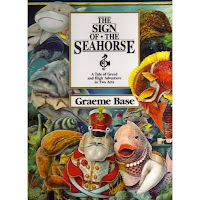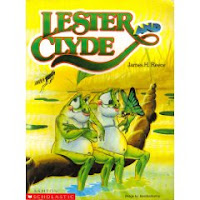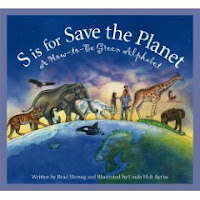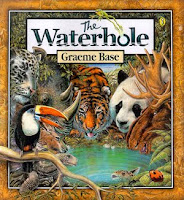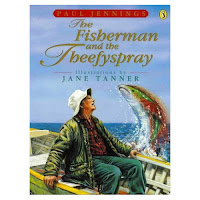The Caldecott Medal was named in honour of nineteenth-century English illustrator Randolph Caldecott. It is the most significant award for picture books in the USA. The Association for Library Service to Children (ALSC) also awards it annually to the artist of the most distinguished American picture book for children. The awards commenced in 1938.
The Coretta Scott King Book Awards are given annually to outstanding African American authors and illustrators of books for children and young adults
Caldecott Medal 2016
Winner
Finding Winnie: The True Story of the World’s Most Famous Bear, illustrated by Sophie Blackall & written by Lindsay Mattick (Little, Brown & Company)
This true story was based on the life of Harry Colebourn, a veterinarian who in 1914 headed off to be part of World War I to tend the horses. Along the way he rescued a baby bear called her Winnie (after Winnipeg) who he took with him to war. Harry travelled from rural Canada in a convoy across the ocean to an army base in England, but this isn't the end of the story. Finally, Winnie ends up in the London Zoo, where Winnie makes another friend, a boy named Christopher Robin. This is the wonderful and true story that inspired Winnie-the-Pooh.
Honour Books:
Trombone Shorty, illustrated by Bryan Collier, & written by Troy Andrews (Abrams Books)
Troy “Trombone Shorty” was from the Tremé neighborhood in New Orleans. He got his nickname by wielding a trombone twice as long as he was high. By age six he was leading his own band, and today this Grammy-nominated artist headlines the legendary New Orleans Jazz Fest.
With the brilliant illustrations of Bryan Collier, Andrews has created a wonderful picture book autobiography. The book tells how Troy followed his dream of becoming a musician, despite the odds, until he reached international stardom. Trombone Shorty is a celebration of the rich cultural history of New Orleans and the power of music.
The book also won the Coretta Scott King illustrated book of the year award (see below)
Waiting, illustrated and written by Kevin Henkes (Greenwillow Books, an imprint of HarperCollins)
This is a delightful picture book from the legendary author and illustrator Kevin Henkes, a previous Caldecott winner with 'Owen' and two Newbery Honour books. Five friends sit happily on a windowsill, waiting for something amazing to happen. The owl is waiting for the moon. The pig is waiting for the rain. The bear is waiting for the wind. The puppy is waiting for the snow. And the rabbit is just looking out the window because he likes to wait! But will anything happen? Will patience win in the end? Or might they just do something else? Children who know what it means to wait and dream will love this book.
Waiting is a big part of childhood—waiting in line, waiting to grow up, waiting for something special to happen—but in this book, a child sets the stage and pulls the strings. Timeless, beautiful, and deeply heartfelt, this picture book about imaginative play, the seasons, friendship, and surprises marks a new pinnacle in Caldecott Medalist Kevin Henkes’s extraordinary career.
Voice of Freedom: Fannie Lou Hamer, Spirit of the Civil Rights Movement, illustrated by Ekua Holmes & written by Carole Boston Weatherford (Candlewick Press)
Despite fierce prejudice and abuse, even being beaten to within an inch of her life, Fannie Lou Hamer was a champion of civil rights from the 1950s until her death in 1977. Integral to the Freedom Summer of 1964, Ms. Hamer gave a speech at the Democratic National Convention that, despite President Johnson’s interference, aired on national TV news and spurred the nation to support the Freedom Democrats. Featuring vibrant mixed-media art full of intricate detail, Voice of Freedom celebrates Fannie Lou Hamer’s life and legacy with a message of hope, determination, and strength.
Last Stop on Market Street, illustrated by Christian Robinson & written by Matt de le Peña (G. P. Putnam’s Sons, an imprint of Penguin).
Every Sunday after church, CJ and his grandma ride the bus across town. But today, CJ wonders why they don't own a car like his friend Colby. Why doesn’t he have an iPod like the boys on the bus? How come they always have to get off in the dirty part of town? Each question is met with an encouraging answer from grandma, who helps him see the beauty—and fun—in their routine and the world around them.
This energetic ride through a bustling city highlights the wonderful perspective only grandparent and grandchild can share, and comes to life through Matt de la Pena’s vibrant text and Christian Robinson’s radiant illustrations.
This book was also named as a 2016 Coretta Scott King Illustrator Honour Book.
Newbery Medal Awards
Winner:
Last Stop on Market Street, written by Matt de la Peña & illustrated by Christian Robinson (G. P. Putnam’s Sons, Penguin Group)
CJ’s journey with his Nanna is anything but ordinary. It's a journey for all of the senses. He discovers the beauty of
music, nature and people around him. His questions are those of many children and
Nanna answers them wisely. She encourages CJ to become “a better
witness for what’s beautiful.”
The Newbery Medal Chair suggested that we “Read it aloud to someone (so that language can) elicit questions, spark imagination and make us laugh is at its best when spoken."
The War that Saved my Life by Kimberly Brubaker Bradley (Dial Books an imprint of Penguin Books)
This is a book with a powerful plot, fine characters and economical use of language. It is a novel about courage, community and conviction. Set during World War II, Nine-year-old Ada has lived her whole life in a one-room apartment, for her mother is embarrassed by Ada’s twisted foot. When her brother is sent to London to escape the war, Ada sneaks out to join him.
This is a book with a powerful plot, fine characters and economical use of language. It is a novel about courage, community and conviction. Set during World War II, Nine-year-old Ada has lived her whole life in a one-room apartment, for her mother is embarrassed by Ada’s twisted foot. When her brother is sent to London to escape the war, Ada sneaks out to join him.
A wonderful piece of historical fiction
family, identity and overcoming adversity.
Roller Girl, written & illustrated by Victoria Jamieson (Dial Books an imprint of Penguin Group USA)
Astrid falls in love with roller derby and learns how to be tougher, stronger and fearless. Victoria Jamieson captures the highs and lows of growing up in this dynamic graphic novel.
Coretta Scott King Awards
The Coretta Scott King (Author) Awards, recognize African American authors and illustrators of outstanding books for children and young adults.
Book Award
Winner
Gone Crazy in Alabama, written by Rita Williams-Garcia, is the King Author Book winner. The book is published by Amistad, an imprint of HarperCollins Publishers.
Honour Books
Three King Author Honor Books were also selected:
All American Boys, by Jason Reynolds and Brendan Kiely and published by Atheneum Books for Young Readers, an imprint of Simon & Schuster Children’s Publishing Division;
The Boy in the Black Suit, by Jason Reynolds and published by Atheneum Books for Young Readers, an imprint of Simon & Schuster Children’s Publishing Division, and
X: A Novel, by Ilyasah Shabazz with Kekla Magoon and published by Candlewick Press.
Illustrator Award
Winner
Trombone Shorty, illustrated by Bryan Collier, is the King Illustrator Book winner. The book was written by Troy Andrews and Bill Taylor and published by Abrams Books for Young Readers, an imprint of ABRAMS.
Honour Books
Two King Illustrator Honor Books were selected:
The Book Itch: Freedom, Truth & Harlem’s Greatest Bookstore, illustrated by R. Gregory Christie, written by Vaunda Micheaux Nelson and published by Carolrhoda Books, a division of Lerner Publishing Group, Inc. and
Last Stop on Market Street, illustrated by Christian Robinson, written by Matt de la Peña and published by G. P. Putnam’s Sons, an imprint of Penguin Group USA.
Related Links
All posts on Awards (HERE)
The full list of all previous Newbery and Caldecott Medal winners and honour books can be found (HERE).






 '
'










